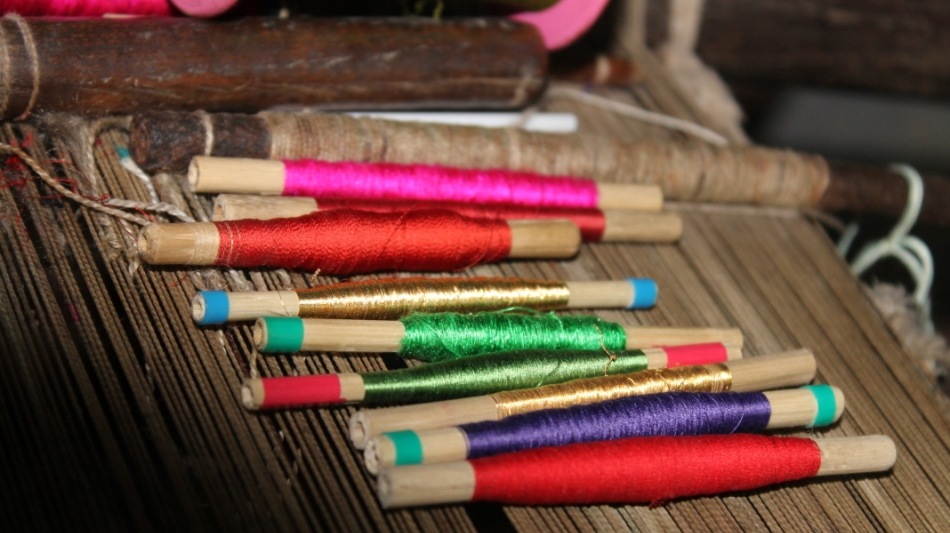
Spindles are used in the kadhwa weaving technique. The more the colors used, the more intricate the design. Photo credit: WeaverStory.
In the autumn of 2015, master weaver Shamim Ansari* was on the verge of quitting his ancestral profession. In their tiny home in Varanasi town, he and his brothers had forever seen their father bent over the loom, churning out lustrous Banarasi silk saris. It was a skill Shamim loved. But he was not earning enough.
“His brothers had already left – one was driving a cycle-rickshaw and another was working at a shop in Bangalore, folding saris all day. This in a family with eight looms,” says Nishant Malhotra, a financial services expert who had come to Varanasi looking for weavers.
At that time, Nishant was exploring the possibility of his own startup.
Today he runs WeaverStory, which sells handloom Banarasi saris online to clients across 20 countries. With an average transaction value of US$300, it has a Facebook following of 130,000.
The young, bootstrapped startup is already breaking even. “We make a profit on every sale,” Nishant tells Tech in Asia.
Their saris sell in the range of US$105 and US$1,500. “I doubt if you can get authentic handloom Banarasi from a branded outlet for less than this,” he says.
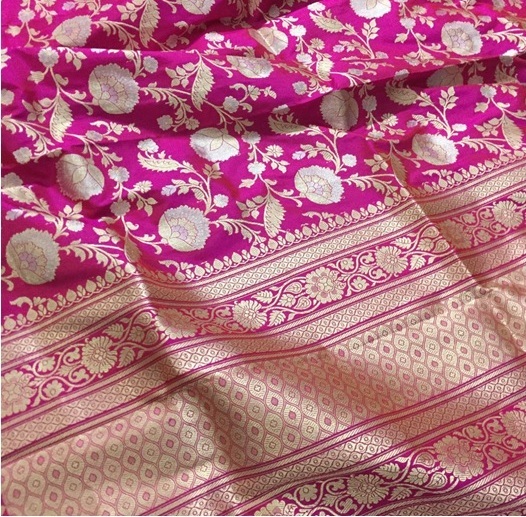
A Banarasi jangla sari. Photo credit: WeaverStory.
The Banarasi, with its delicate warp and weft, and intricate golden thread embroidery, is considered a must-have for every bride in much of India. But the industry has fallen upon dark days, primarily due to intense competition from the power loom, which churns out cheaper versions by the dozen.
Why did it appeal to Nishant as his first startup idea?
A pact on Facebook
Two years ago, Nishant used to work with the financial services firm, Principal Retirement Advisors, in Mumbai but was looking to relocate to Delhi where his family lived. Starting his own business seemed like a good way to do that.
But what business?
Market trends indicated a lot of interest in apparel. By 2020, fashion and lifestyle are set to overtake consumer electronics as the largest e-tail category.
There was another hook. “The 100 Saree Pact was doing the rounds on Facebook, and I saw how women were reacting to it,” says Nishant. The pact sees women putting up 100 different pictures in saris on social media along with an anecdote about each sari. His sister-in-law Ruchika Sharma was an active member of the pact.
The two realized that saris were a high-interest area among women in the family, especially heavy, intricate ones that could be worn on special occasions. The idea of a startup that dealt exclusively in the Banarasi weave surfaced.
Nishant and Ruchika found the perfect co-founder in family friend Ritu Lekhi, a designer with her own boutique.
“We did a site visit to Varanasi in August 2015, and the same month we set up a Facebook page to sell some of the saris we had brought with us,” says Ruchika.
The WeaverStory website came up in January last year. WhatsApp is another major online medium for them.
They started with seven saris. “Now we stock around 500 saris, including around 150 in transit (that is, in various stages from manufacture to delivery), at any point of time,” says Nishant.
Clickety clack goes the loom
Banarasi (a name derived from Banaras, the anglicized version of Varanasi) is a style of weaving.
Silk occupies pride of place in this industry, but cotton, organza, and georgette are also used as raw material. A single Banarasi handloom silk sari can take anything from 25 days to three months from conceptualization to manufacture.
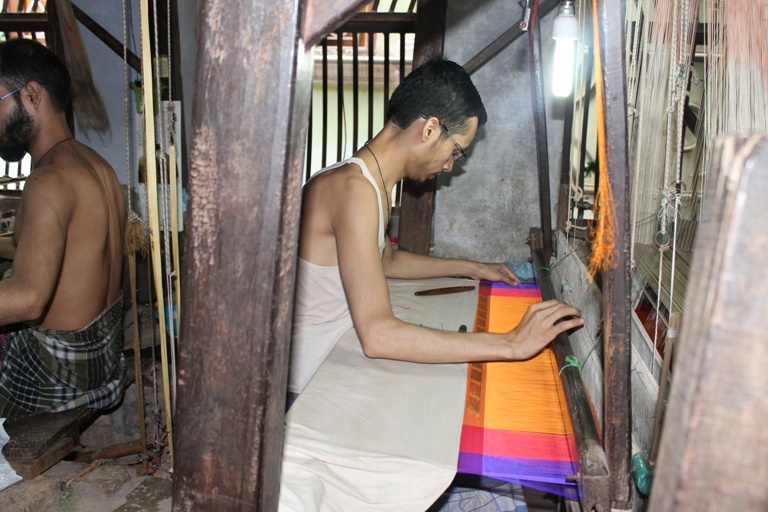
Weaving in the pit loom, where the weaver sits in a pit and the loom is at the waist level. Photo credit: WeaverStory.
Traditionally, there are three important points-people in the trade – the master weaver who sets up the loom and provides the design, the junior weaver who does the actual weaving, and the trader who markets the product.
Ruchika explains that a weaver usually gets paid US$3 to US$6 a day for his labor by a master weaver. “Typically, a trader loans the master weaver money for day-to-day functioning. The latter gives the sari to the trader to stock and sell, and gets some share in the profit, once a sari is sold,” she explains.
But WeaverStory steps into the shoes of the trader, who is the quintessential middleman, and that helps the startup majorly cut costs. It works directly with 11 weaver families in Varanasi.
While Nishant notes that weaving is typically a male preserve, WeaverStory has been trying to involve women by training them in making tassels. “Tassels attached to our saris is one of our specialties, and this is done exclusively by women. For this, we pay separately,” says Nishant.
The startup also gives educational help to their children.
Banarasi was called the ‘golden fabric’ because it was said to use real silver thread dipped in gold water, says Ruchika. It was patronized by royalty, and the designs on a Banarasi have typically reflected the architectural and cultural motifs of the time.
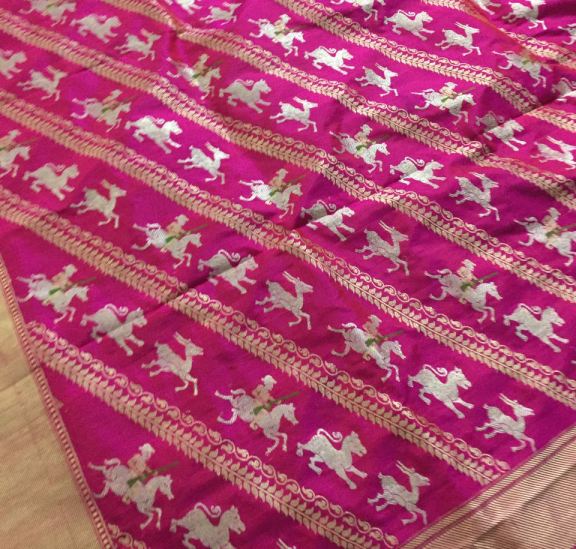
A Banarasi sari with the hunting motif. Photo credit: WeaverStory.
Over the years, however, the industry has been dealt a big blow by the advent of power looms, cheaper textiles, and the difficulty of procuring raw material.
Nishant points to another problem. “Most weavers have not been responsive to changing customer tastes.” This is where WeaverStory has been stepping in majorly. For instance, they have experimented with a trendy textile like linen.
They also provide their own designs to the weaver.
“We do a lot of fusion. For instance, traditional Banarasi will depict animal motifs and hunting scenes reflecting northern Indian motifs, but our saris use the annapakshi and rudraksh motifs from southern India too.”
The startup, however, zealously guards its weavers. Nishant was unwilling to name them or even the exact neighborhood where they live. “Suffice it to say that authentic Banarasi can only come from within a one-km radius of Varanasi!” he says.
A tangled web online
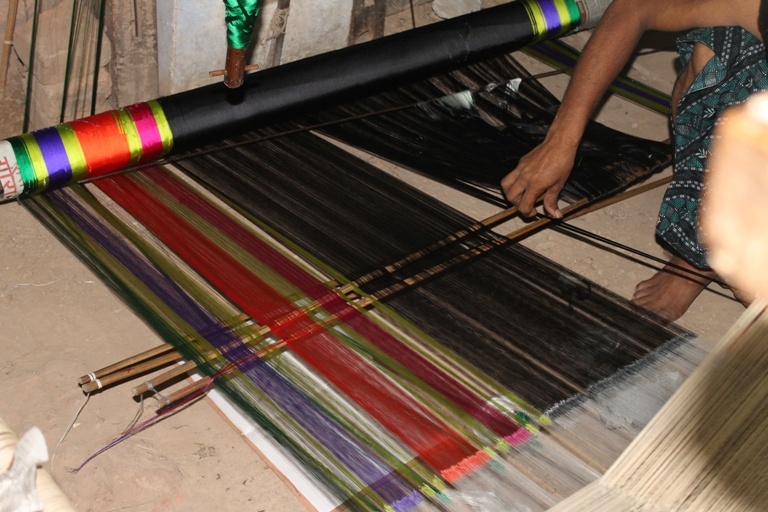
Photo credit: WeaverStory.
But don’t they face fierce competition from startups like Craftsvilla and Limeroad? “No,” says Nishant, “because they sell ready-to-wear.”
“Also, unlike other apparel startups, our logistics costs work out well because we sell a high-end product and don’t do large volumes,” he says.
The WeaverStory co-founders also differentiate themselves from a marketplace like Jaypore. “No doubt it has a far larger reach than us, but we offer only our own products and have a sharp focus on saris and dupattas, not other lifestyle items.”
“We will even customize for you!” says Nishant. “There was a young lady from Delhi who wanted her Banarasi to have the same motifs as her mother’s sari bought many moons ago. We were able to do that.”
WeaverStory claims that it has 40 percent repeat customers.
The co-founders say staying lean has helped them be profitable right from the beginning, that too in a crowded apparel market. “Our only marketing cost has been for Facebook advertising,” says Ruchika.
“It is only a few months back that we took up a warehouse cum store, and hired two women to help us. Until then, we used to stock at home. We would do the folding, ironing, packaging, pretty much everything, ourselves. Family members still pitch in to help!” .
Nishant quips: “Even the models in our photos are women from the family and friends! The shoots were done by Ritu’s husband who is a photographer with the BBC.”
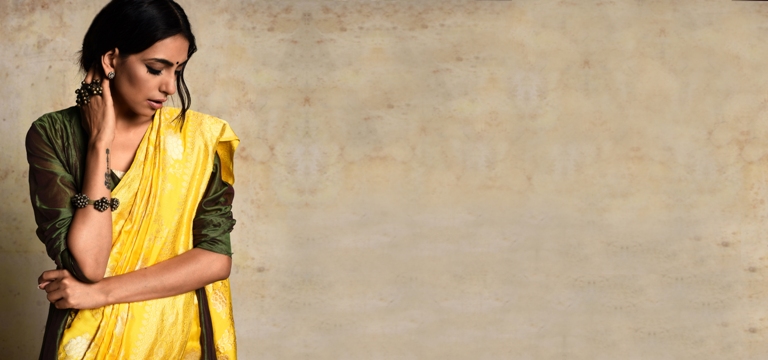
Photo credit: WeaverStory.
The challenge for WeaverStory, however, lies elsewhere. The Banarasi is “a touch-and-feel product, and selling it online can be tough.” To beat that, the startup takes part in exhibitions organized by NGOs “that get discerning clients.”
They have also been tying up with sites like Parisera and Jaypore. They are also trying to attract more young, first-time Banarasi buyers with their lower range of saris costing around US$105.
Seventy percent of their sales happen online, that is, via Facebook, WhatsApp, and their website.
Nishant says with a touch of pride, “Of the 1,000 saris we have sold so far, there were only three returns – that too, not because of any defect but because the actual color was different from what it appeared to be online!”
*Name changed to protect privacy.
This post Meet the young Indian ecommerce startup that makes a profit out of every sale appeared first on Tech in Asia.